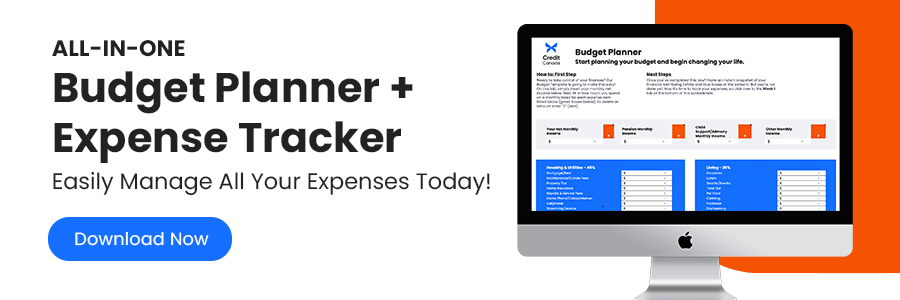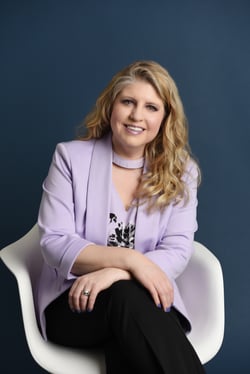
As a young professional embarking on your career, managing your money effectively is crucial for long-term financial security and success. The decisions you make today will shape your financial future. If you feel like there’s never enough money to pay for everything you want or need or find yourself living paycheque to paycheque, we can help.
In this blog post, we’ll explore 6 straightforward strategies that can help you improve your money management and set you up to achieve your future financial goals. Get ready to build a solid financial foundation that will pave the way for your dreams to become a reality!
Money Management Tip #1: Create a Monthly Budget
Making a budget is one of the first steps anyone should take when trying to manage their money. While the process of creating a monthly budget can be daunting at first, will get easier with time as you become more practiced with it.
But, what kind of budget should you make? There are a couple of different budgeting methodologies that you could use.
Start with Verifying Your Income and Expenses
First, however, you need to figure out what your cash flow and expenses will be. This means tracking your spending and income over the course of a few months. Why a few months and not a single month? It’s so you can have a better idea of your average spending across each of the different “budget categories” (i.e., the types of things you spend money on, like utilities, food, and housing).
Also, by tracking across several months, you can avoid basing your budget on a month where you’re spending more or less than you normally would.
Here, it can be helpful to use a tool like our Budget Planner + Expense Tracker to keep track of your expenses and income. This way, you can stay organized while putting together your budget plan.
The Money-Bucket System
In the money-bucket system, you create a few “bank accounts” with buckets like:
- The Retirement Bucket. This is where your retirement fund contributions live. This can cover things like Registered Retirement Savings Plans (RRSPs) and Tax-Free Savings Accounts (TFSAs).
- Fixed Expenses Bucket. This is where your “fixed” expenses (i.e., the bills that don’t change much or at all from month-to-month) live. This can include items like insurance payments, mortgages, and utilities.
- The Variable Monthly Expenses Bucket. This is where your more inconsistent or constantly-changing expenses live. This may include items like groceries, clothing, entertainment, and other items where you might spend more or less depending on your needs or wants for a given month.
- The “Allowance” Bucket. This is a bucket for leftover money that can be applied to any purpose without impacting your ability to pay for items from any other buckets. This can be used for impulse purchases or to help meet more important long-term financial goals faster.
These are just a few examples of buckets to create for this monthly budgeting method. The biggest challenge may be keeping track of your variable expenses budget, as it’s likely to change from month to month and can disrupt your more routine spending plans.
The Envelope Budget (Cash Stuffing)
This is a strict and regimented budgeting technique where you provide yourself with clear instructions on when and where you can spend your money. Also known as the “cash method” or “cash stuffing,” the envelope budget involves covering your variable expenses with cash that you’ve set aside instead of relying on your credit card.
Basically, you create the same buckets that you would for the money-bucket system, but then withdraw that money as cash and stick it into envelopes specifically set aside for each spending category.
The envelope budget’s value is based on the theory that we tend to spend more when using cards because we don’t see the physical money leaving our hands and that there’s a waiting period between spending and actually paying.
Using an envelope budget, you don’t spend more than what you allotted for each variable spending category. Once the cash you stuffed into the envelope for that spending category is empty, that’s it.
This method helps enforce some discipline by putting a physical limit on the money you can spend each month. However, your fixed expenses (such as rent/mortgage) should still be taken out of your bank account to prevent late payments or other issues.
Money Management Tip #2: Building an Emergency Fund
One of the things that can make sticking to any monthly budget difficult is the fact that life is unpredictable. There may be situations where you suddenly need to spend a lot of money all at once.
For example, say that something happens to your car and you need to replace it as soon as possible so you can keep going to work, run errands, and remain independent of public transit. According to Loans Canada, the average price of a new car in Canada is about $61,000. That’s a lot of money to shell out on short notice.
Even just the down payment on a new or used vehicle may be more than most can comfortably afford on top of their other monthly expenses. This is especially true if they were still making payments on their old vehicle. A down payment is typically 10% - 20% of the vehicle’s purchase price, so a $61,000 car’s down payment would be about $12,200.
So, many Canadians may end up putting emergency expenses on their credit cards to pay off later when they have the money to spare. Unfortunately, this may lead to excessive debt as the interest on those emergency expenses keeps piling up.
To help avoid this issue, you may want to start setting aside some money in an emergency fund. This fund can be used to pay for sudden large expenses like buying a new car, covering a few months of job loss, or any other situation where you find yourself needing money.
How much should you set aside for your emergency fund? One recommendation is setting aside money equal to about three to six months of your necessary living expenses for your emergency fund. It can also help to put this money into a bank account you rarely look at so that you aren’t constantly tempted to use it for non-emergency spending.
You can start small by putting a small percentage of your pay into the account each month when you get paid. You could also take advantage of “rounding up” services offered by some banks or credit unions. For example, if you spend $2.50 at a store, the bank would round the charge up to a flat $3 and put the extra $0.50 in your savings account. This helps you build your emergency fund without you needing to make any extra effort.
Money Management Tip #3: Pay Off Your Credit Cards Each Month
Opening a credit card or line of credit with your bank can be a great way to start building your credit history. When using a credit card, it’s a good idea to be careful and not put more onto your card than you can comfortably pay off within one or two paycheques.
This way, you can avoid building up debt from interest on credit cards while still building a good credit history that can help you when you apply for a mortgage or other loan in the future. Why is this important? Because, with a good credit score, lenders may offer lower interest rates on loans and other financial services—helping you save money.
Money Management Tip #4: Start Preparing for Your Future Early
Why worry about planning for your future when you’re still in your 20s or 30s? After all, you have decades to prepare for retirement, right?
The thing is that the money habits you build now will have a strong influence on your habits later in life. By starting early with budgeting, responsible spending, and investing habits, you can create a better foundation for your future.
Additionally, by putting aside money sooner rather than later, you can give it more time to grow. For example, a $1,000 investment that has 6% annual compounded growth would reach a value of about $5,743.49 in 30 years. Meanwhile, if you only gave yourself ten years to let that money grow, it would be worth about $1,790.85—so you’d have to invest more to reach the same target amount.
If you can create some spare room in your budget and don’t have any debts with high interest rates, starting or adding to an investment account can be a great idea.
Money Management Tip #5: Watch Out for “Lifestyle Inflation”
You’ve heard of regular inflation, where the cost of goods and services increases over time, but what’s lifestyle inflation? To give a simple definition, lifestyle inflation (sometimes also referred to as lifestyle creep) refers to the tendency for people to start spending more as their income increases.
While some increase is unavoidable—especially as inflation affects the economy—spending more just because you’re earning more can keep you trapped living paycheque to paycheque.
Having a set monthly budget and making the decision to funnel any extra income into paying off debt, preparing for retirement, or saving up for emergencies can help you mitigate the risk of lifestyle inflation. However, you don’t have to remain perfectly disciplined at all times. Just try not to spend more than you can afford and keep to your budget as much as possible.
Money Management Tip #6: Talk to a Financial Advisor or Credit Counsellor
If you’re struggling with excessive debt or just don’t know what to do to manage your finances, consider looking into credit counselling services or speak with your financial advisor to talk about your financial goals.
Whether you’re looking to be debt free or just need a helping hand with creating (and sticking to) a monthly budget, Credit Canada is here to help. Our certified Credit Counsellors are available to help with your debt management needs, and we have more articles in our blog discussing money management topics that you might find useful. Reach out today to get started.

Frequently Asked Questions
Have a question? We are here to help.
What is a Debt Consolidation Program?
A Debt Consolidation Program (DCP) is an arrangement made between your creditors and a non-profit credit counselling agency. Working with a reputable, non-profit credit counselling agency means a certified Credit Counsellor will negotiate with your creditors on your behalf to drop the interest on your unsecured debts, while also rounding up all your unsecured debts into a single, lower monthly payment. In Canada’s provinces, such as Ontario, these debt payment programs lead to faster debt relief!
Can I enter a Debt Consolidation Program with bad credit?
Yes, you can sign up for a DCP even if you have bad credit. Your credit score will not impact your ability to get debt help through a DCP. Bad credit can, however, impact your ability to get a debt consolidation loan.
Do I have to give up my credit cards in a Debt Consolidation Program?
Will Debt Consolidation hurt my credit score?
Most people entering a DCP already have a low credit score. While a DCP could lower your credit score at first, in the long run, if you keep up with the program and make your monthly payments on time as agreed, your credit score will eventually improve.
Can you get out of a Debt Consolidation Program?
Anyone who signs up for a DCP must sign an agreement; however, it's completely voluntary and any time a client wants to leave the Program they can. Once a client has left the Program, they will have to deal with their creditors and collectors directly, and if their Counsellor negotiated interest relief and lower monthly payments, in most cases, these would no longer be an option for the client.







